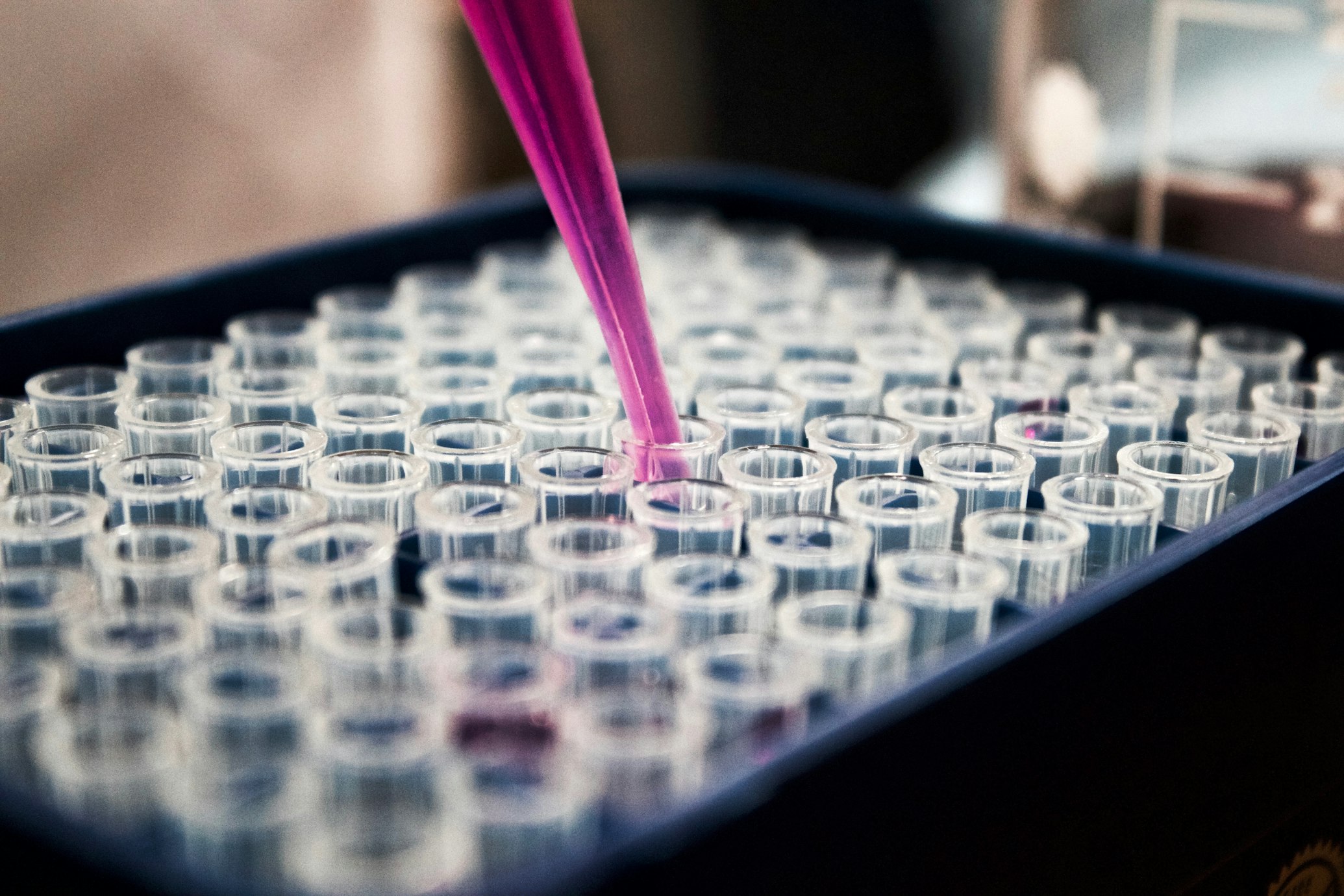Imagine turning kitchen scraps, fallen leaves, or even plastic bottles into brilliant, glowing nanoparticles. This isn't science fiction—it's the reality of green fluorescent carbon dots (CDs), tiny eco-friendly marvels transforming fields from medicine to environmental safety.
Discovered accidentally in 2004 1 , these nanoscale carbon particles (typically <10 nm) shine brightly when exposed to light, rivaling heavy metal-based quantum dots but without the toxicity. Their emergence marks a shift toward sustainable nanotechnology, where waste becomes a resource and chemistry aligns with ecology.

Fluorescent materials under UV light, similar to carbon dot emissions

Nanotechnology enables precise control at molecular levels
Decoding the Green Glow: Structure and Properties
Nature's Blueprint for Brightness
Green CDs consist of a carbon-rich core surrounded by functional groups (–OH, –COOH, –NH₂) that make them water-soluble and tunable. Their secret lies in two key features:
Quantum Confinement
Electrons within the carbon core are restricted by the tiny particle size, dictating the energy (and thus color) of emitted light .
Surface States
Functional groups create energy traps that influence fluorescence. For example, nitrogen doping introduces electron-rich sites, shifting emission to longer wavelengths (e.g., green) 2 .
Why "Green" Synthesis?
Traditional CD production often involves harsh chemicals or energy-intensive processes. Green CDs, however, are made from renewable biomass like fruits, vegetables, or agro-waste via simple methods:
- Hydrothermal/Solvothermal Synthesis: Biomass is heated in water or solvents (e.g., ethanol) at 120–300°C, carbonizing it into CDs 3 4
- Microwave Pyrolysis: Honey or PEG exposed to microwaves forms fluorescent carbon nanoparticles in minutes 7
Quantum Yield (QY) Comparison of CDs from Different Sources
| Precursor | QY (%) | Key Doping | Emission Color |
|---|---|---|---|
| m-Phenylenediamine | 30.92 | N, P | Green |
| Amaranth | 42.0 | N (from OPD) | Red |
| PET Waste | 49.6 | Intrinsic O-groups | Blue |
| Honey/PEG | ~25–35 | Natural sugars | Blue-Green |
Featured Experiment: Turning Amaranth into a Water Sensor
The Quest for Red Emission
While green-emitting CDs are common, creating efficient red-emitting ones is challenging. A 2025 study achieved this using amaranth leaves and o-phenylenediamine (OPD), enabling ultrasensitive water detection in organic solvents 3 .
Step-by-Step Methodology
- Precursor Preparation: Fresh amaranth leaves were juiced and mixed with OPD in ethanol.
- Solvothermal Reaction: The mixture was heated at 180°C for 8 hours, carbonizing it into red CDs (R-CDs).
- Purification: Crude R-CDs were passed through a chromatographic column, removing impurities and boosting QY to 42% 3 .
Results and Analysis
- Optical Properties: R-CDs emitted at 601 nm (deep red) and showed excitation-independent behavior, ideal for consistent detection.
- Water Sensing: In acetone, adding trace water (0.1–1.0% v/v) caused a 250% fluorescence increase due to hydrogen bonding between R-CDs and water.
Water Detection Performance of Amaranth-Derived R-CDs
| Organic Solvent | Detection Range (% v/v) | Limit of Detection (LOD) | Response Mechanism |
|---|---|---|---|
| Acetone | 0.1–1.0 | 0.03% | Fluorescence enhancement |
| Ethanol | 0.5–5.0 | 0.12% | Linear intensity increase |
| Tetrahydrofuran | 0.2–2.0 | 0.07% | Emission blue-shift |

Laboratory setup for carbon dot synthesis and analysis
The Scientist's Toolkit: Essential Reagents for Green CD Research
Key materials and their roles in synthesizing and applying green CDs:
Reagent Solutions for Green CD Innovation
| Reagent/Material | Function | Example Application |
|---|---|---|
| Biomass Precursors | Sustainable carbon source | Amaranth for R-CDs 3 |
| Nitrogen Dopants | Enhances QY; shifts emission to green/red | m-Phenylenediamine in G-CDs 2 |
| Phosphoric Acid | Facilitates P-doping; improves photostability | Co-doping in G-CDs 2 |
| Polyethylene Glycol (PEG) | Surface passivator; boosts biocompatibility | Honey/PEG FCNPs for drug delivery 7 |
| Ethanol/Water | Green solvents for hydrothermal synthesis | Amaranth CD purification 3 |
Illuminating Applications: From Labs to Daily Life
Anti-Counterfeiting & Security
N,P-co-doped green CDs (QY=30.92%) are used as invisible inks. Under UV light, they glow intensely, enabling tamper-proof labels for currency or pharmaceuticals 2 .
Biomedical Imaging & Therapy
Honey/PEG CDs penetrate cells without toxicity, serving as fluorescent probes for real-time tumor tracking. Their surface can be modified to deliver drugs like doxorubicin 7 .

Biomedical applications of carbon dots in imaging and drug delivery

Water quality monitoring using advanced nanomaterials
The Future is Bright (and Green)
Green fluorescent carbon dots exemplify how nanotechnology can harmonize with ecology. By transforming biomass and waste into tunable, biocompatible nano-lights, scientists are pioneering solutions from precision medicine to pollution control.
Current challenges—like standardizing QY across batches—are spurring innovations in AI-guided synthesis . As research advances, these tiny green sparks may soon illuminate our screens, safeguard our health, and protect our planet, proving that the smallest innovations can have the brightest impact.

In the glow of carbon dots, we find a beacon guiding us toward sustainable nanotechnology.